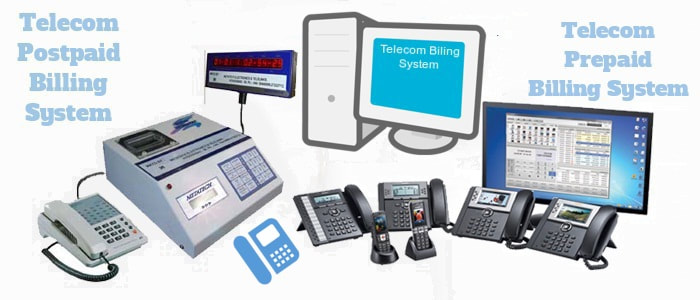In the wake of going through numerous dimensions of deliberation, the telecom administrations are conveyed to our doorsteps and we essentially don’t make a big deal about their intricacy. Stressed, that something could turn out badly! Try not to be, the telecom billing systems of today are inventive, powerful and most critical of all, they are dependable. Need to recognize what makes them work so well, read on.
The
best telecom billing system is vast to the point that this article might not have enough space to cover every one of its highlights. Be that as it may, we can examine a couple of key highlights and illuminate ourselves on its different key aspects. We should begin with a correlation:
At the point when a client chooses to buy in to a telecom specialist co-op, he has two alternatives: Prepaid or Postpaid. Prepaid clients are commonly higher with relatively 70% clients favoring it over postpaid. In any case, postpaid arrangement has its own points of interest – both for clients and suppliers – that will move toward becoming clearer from the examination beneath:
Billing – Prepaid billing system is significantly more thorough than postpaid billing. As a client pays before utilizing the administrations, his record should be refreshed continuously. Then again, postpaid billing is much less demanding to deal with for specialist co-ops as they can charge client toward the month’s end.
Prepaid arrangement takes out the shot of abusing the information and postpaid arrangement guarantees comfort in bill installments.
Administrations – Real-time charging (in prepaid billing) isn’t reasonable for taking care of the prerequisites of business clients. As the charges should be investigated, bifurcated and adjusted relying upon the field-tested strategy, it ends up more enthusiastically to do as such much progressively.
For business clients, postpaid billing is a perfect arrangement as it takes into consideration better support of clients’ records as indicated by their chain of importance.
How Telecom Postpaid Billing System Works?
To understand the operations of postpaid system, we should know the information required by the billing system.
- The number from which the call is made
- The number to which the call is made
- Starting time of the call
- Duration of the call
- Type of call
When a call is made, the above mentioned pieces of information, which are also known as CDR attributes are received by a billing system. The system converts this information into a format, which could be understood. The converted information is guided to the customer’s account and CDRs are charged and rated according to the customer’s plan.
After rating is done, the information is stored in the billing system. Later, on the billing cycle date (the date of bill generation), the information is processed and converted into bill/invoice. During the invoicing process, relevant taxes and discounts are also applied. The bill is sent to the customer. The bill has a due date before which the customer should make the payment. If the customer fails to make the payment in specified time, then he incurs a late payment fees. The fee is added to the billed amount. After the reception of payment, the customer’s account is updated.
